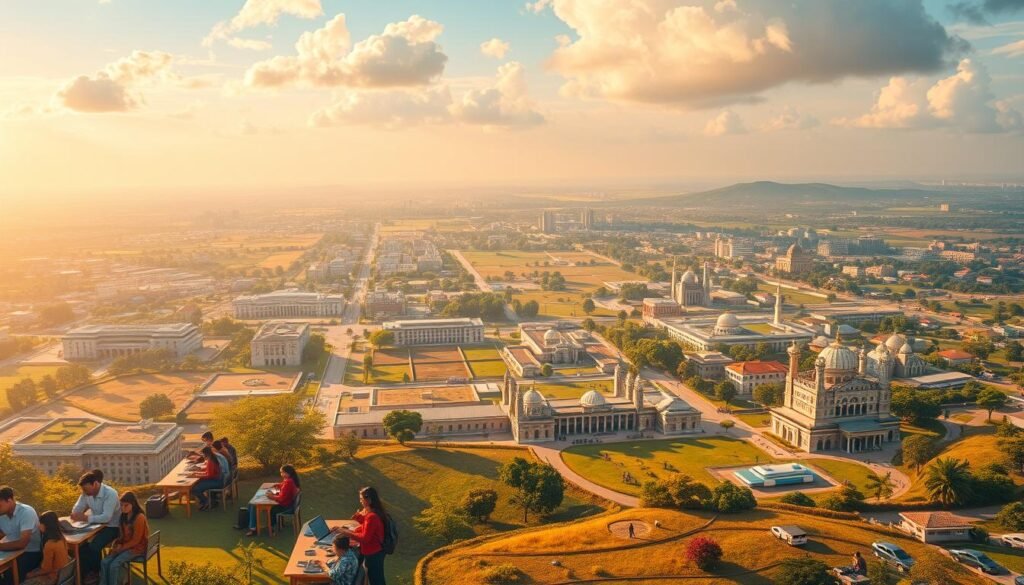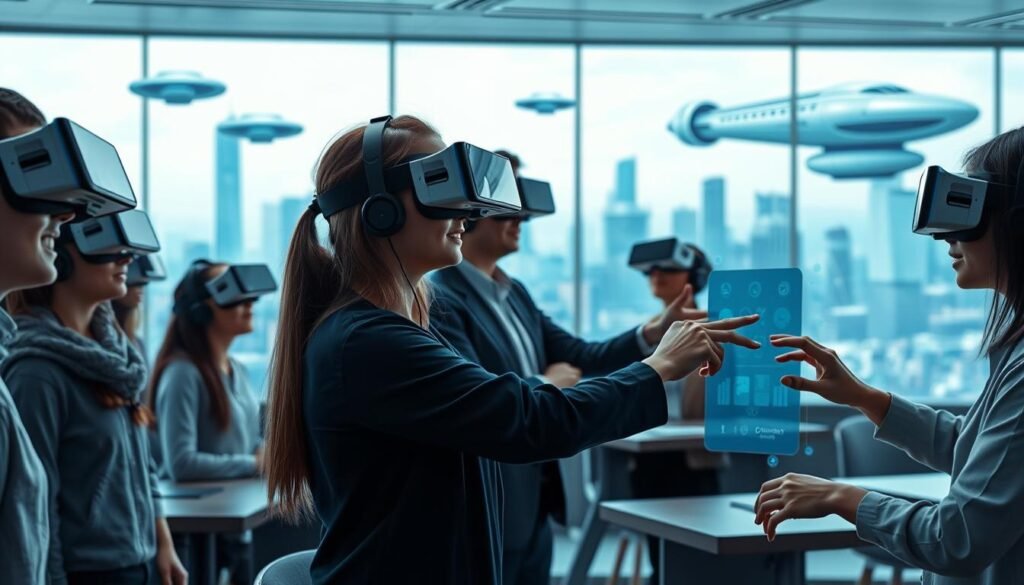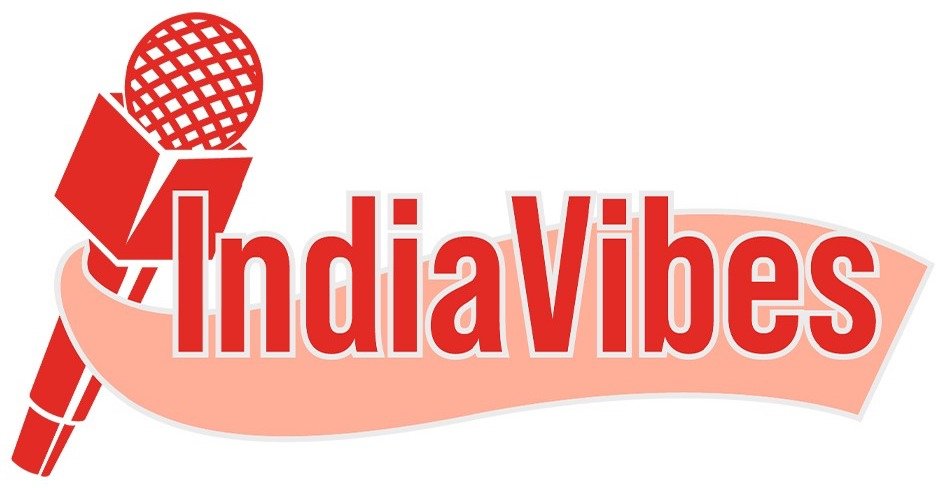With over 250 million students, the country hosts the world’s third-largest higher education market. Yet, only 27.1% of young adults access college—a gap the National Education Policy 2020 aims to bridge by 2035.
The pandemic forced 75% of teachers to rely on WhatsApp for lessons. Now, virtual reality classrooms and AI tutors are reshaping learning. Digital tools are closing accessibility gaps, but infrastructure challenges remain.
Reforms under NEP 2020 promise skill-based curricula and tech integration. Can these changes prepare students for tomorrow’s jobs? We explore how policy meets practice in this critical transformation.
NEP 2020: India’s Blueprint for Educational Transformation

A bold vision for modernizing classrooms unfolds through NEP 2020. This national education overhaul targets systemic gaps—from rural enrollment to graduate employability. With plans to double GDP investment to 6%, the policy bridges divides through four pillars:
- Access: Mid-day meal extensions boosted rural enrollment by 15%.
- Equity: Blended preschool pilots in Karnataka address early learning gaps.
- Quality: Competency-based assessments replace rote memorization.
- Accountability: Teacher training programs aim to upskill 63% of educators by 2025.
Key Reforms and Their Impact
The shift starts early. Vocational training now begins in Grade 6, tackling the 48% employability crisis. IIT Delhi’s sustainability courses exemplify multidisciplinary learning—merging engineering with environmental science.
| Traditional Model | NEP 2020 Approach |
|---|---|
| Exam-centric pressure | Skill-based evaluations |
| Fixed streams (Arts/Science) | Flexible subject combinations |
| Limited digital integration | AI tutors and VR classrooms |
Multidisciplinary Learning and Early Childhood Focus
The “5+3+3+4” model prioritizes foundational literacy. States like Kerala use storytelling apps for numeracy, while Punjab’s teacher workshops align with NEP’s innovation goals. Yet, infrastructure hurdles persist—only 34% of rural schools have internet access.
“NEP’s success hinges on grassroots execution. Training 3 million educators is our biggest challenge.”
The Digital Leap: How Technology is Reshaping Classrooms

EdTech investments surged 350% since 2020, reshaping academic experience. The sector will hit $10.4 billion by 2025—fueled by demand for interactive tools and remote access.
EdTech Boom Post-Pandemic
Platforms like BYJU’S now serve 150 million users. Yet Rajasthan’s tablet shortages reveal disparities. Urban classroom upgrades contrast with Bihar’s 68% offline schools.
Virtual Reality and Immersive Learning
Labster’s VR simulations let students manipulate DNA strands. Over half of educators support VR/AR integration—but 27% of rural homes lack internet for these technology leaps.
Adaptive Learning Platforms
Amazon Academy tailors JEE prep using AI. NPTEL’s 4,000 courses reach 15 million learners. However, UNICEF warns of 5+ hour screen times straining young minds.
“EdTech isn’t just screens—it’s about designing equitable digital bridges.”
While platforms democratize learning, true transformation requires addressing infrastructure gaps. The future hinges on balancing innovation with inclusive access.
AI in Education: From Smart Classrooms to Personalized Learning
From predicting dropouts to translating lessons, AI tools are reshaping learning experiences. The market for artificial intelligence in academia grows at 40% annually—proof of its transformative potential. We’re witnessing a seismic shift where algorithms don’t just assist but actively collaborate with educators.
AI-Driven Curriculum Customization
Platforms like Embibe analyze 10 million student datasets to predict learning gaps. Their machine learning models adjust content difficulty in real time, boosting knowledge retention by 75%. Meanwhile, Microsoft’s Shiksha CoPilot breaks language barriers, delivering STEM lessons in 12 vernacular languages.
Andhra Pradesh’s AI attendance system reduced dropout rates by 18%. Such innovation proves technology isn’t just about flashy gadgets—it’s about systemic efficiency.
Machine Learning for Student Performance Analysis
IIT Bombay’s algorithms flag at-risk students 8 weeks earlier than manual methods. CENTA upskills teachers using AI modules that simulate classroom challenges. Yet ethical questions linger: How secure is student data in systems like UDISE+?
“AI tutors will soon converse in 22 Indian languages—democratizing access to quality education.”
The future is adaptive. By 2025, NLP-powered tutors could offer personalized support for every learner—bridging gaps no human teacher could alone.
Skill-Based Education: Bridging the Gap Between Degrees and Jobs
Employers now value practical abilities as much as academic credentials. LinkedIn’s 2024 survey reveals 69% of recruiters prioritize demonstrable skills over degrees. This shift demands education systems that deliver real-world readiness.
Micro-Credentials and Industry Partnerships
The National Skill Development Corporation trained 4.5 million youth last year through targeted programs. Success stories include:
- Tata STRIVE’s 85% placement rate in automotive technology roles
- NASSCOM’s 10,000 SaaS internships filling critical IT gaps
- Infosys Springboard offering free upskilling—saving learners ₹3 lakh vs traditional degrees
Maruti Suzuki’s AR-enabled mechanic training exemplifies innovation, reducing training time by 40%. Such industry collaborations ensure curriculum relevance.
Project-Based Learning and Vocational Training
Kerala’s “COVIDpreneurs” initiative turned pandemic challenges into opportunities. Participants gained marketable skills in e-commerce and digital marketing.
Yet gaps persist. While 1.4 million engineers graduate annually, only 400,000 meet industry standards (AICTE). Solutions like stackable credits—combining SWAYAM courses with Coursera certifications—could bridge this divide.
“Vocational training must evolve at tech’s pace. AR simulations today outperform yesterday’s textbooks.”
The future belongs to adaptable learning models that prioritize development over diplomas. By aligning education with economic needs, we can transform access into achievement.
Challenges Holding India Back: Systemic Hurdles to Overcome
Behind the progress lies a web of systemic barriers slowing transformation. While policies like NEP 2020 chart ambitious courses, ground-level challenges persist—from outdated resources to uneven access. These fractures in the ecosystem demand urgent attention.
Outdated Curricula and Exam-Centric Pressure
60% of CBSE schools still use 2011 NCERT textbooks—missing AI, climate science, and digital literacy updates. This misalignment affects quality, leaving students unprepared for modern workplaces.
The exam obsession continues. Rote memorization trumps critical thinking, despite NEP’s competency-based evaluation push. Delhi spends ₹50,000 per student annually versus Bihar’s ₹8,000—a gap that perpetuates inequitable outcomes.
The Rural-Urban Digital Divide
32% of rural learners lack online access (ASER). Contrast this with:
- Mumbai schools using VR lab simulations
- Odisha’s “cycle schools” delivering books by bicycle
Haryana’s 2022 smart classroom initiative failed when tablets broke without maintenance teams. Such cases reveal technology’s limits without support systems.
Teacher Training and Infrastructure Gaps
Uttar Pradesh struggles with a 1:35 teacher-student ratio. Tamil Nadu has 3,000+ vacant positions. Even existing teachers face hurdles—40% of schools lack functional computers (UDISE 2022).
“Without addressing these resource gaps, policy reforms remain theoretical.”
Solutions emerge through partnerships. Microsoft’s Shiksha-Diksha program trains educators in digital tools—a PPP model proving scalable. Such collaborations could turn challenges into opportunities for holistic quality improvement.
The Hybrid Future: Blending Online and Offline Learning
The classroom of tomorrow isn’t digital or physical—it’s both. Hybrid models now dominate academic discourse, with 71% of students preferring this blended approach. These systems merge the flexibility of digital tools with the accountability of in-person instruction.
Early adopters show remarkable results. FIITJEE’s hybrid JEE prep boasts an 85% success rate by combining AI tutors with weekend lab sessions. Meanwhile, Kerala’s “Victer” education channel reaches 2 million homes through TV broadcasts and WhatsApp follow-ups.
Cost-Effective Scaling vs. Premium Offerings
Institutions take varied approaches to implementation:
| Model | Institution | Cost | Reach |
|---|---|---|---|
| Elite Hybrid | IIM Ahmedabad | ₹23L (vs ₹32L traditional) | 300 students/year |
| Mass Hybrid | Kerala Victer | ₹150/year | 2M households |
When Technology Meets Terrain
Not all attempts succeed. Nagaland’s 2023 hybrid rollout failed when 68% of students couldn’t access required apps. This highlights critical access gaps between urban and rural areas.
Solutions emerge through tiered models:
- Metro areas deploy VR labs for medical training
- Towns use tablet-based learning pods
- Villages leverage community radio lessons
“Hybrid isn’t about replacing teachers—it’s about amplifying their impact through smart technology integration.”
Sikkim’s blockchain credential system points to the future, verifying skills across digital and physical platforms. By 2025, 60% of colleges will likely adopt flipped classrooms—where theory happens online, and campuses become collaboration hubs.
Global Classrooms: Internationalization and Collaboration
Global academic partnerships are redefining learning boundaries like never before. A 15% rise in foreign enrollments (AISHE 2023) reflects this shift. With 22 IITs now offering joint degrees, we’re witnessing a new era of cross-border innovation.
Dual-Degree Programs and Foreign Partnerships
IIT Bombay’s collaboration with Australia’s Monash University epitomizes this trend. Students earn dual credentials in AI and sustainability—merging quality curricula from two continents. Such programs address skill gaps while fostering cultural exchange.
The “Study in India” initiative targets 55,000 enrollments by 2025. Yet disparities persist. Ashoka University’s 30% foreign faculty dwarfs the national 3% average, highlighting uneven access to global talent.
Attracting International Students
Manipal Academy’s 82-country student body showcases successful multicultural integration. However, visa rejections for 43% of African applicants reveal systemic barriers. Streamlining processes could unlock untapped potential.
| Initiative | Impact | Challenge |
|---|---|---|
| NEP Academic Bank | Enables credit mobility across 100+ institutions | Limited awareness in rural colleges |
| QS Ranking Push | 10 Indian universities projected in Top 200 by 2025 | Faculty-student ratio gaps |
“Internationalization isn’t about prestige—it’s about creating ecosystems where diverse minds solve global problems together.”
By leveraging NEP’s frameworks and addressing logistical hurdles, we can transform development into measurable progress. The future belongs to institutions that erase borders—both physical and academic.
Sustainability in Education: Green Campuses and Ethical Tech
Solar panels now power more than buildings—they fuel educational revolutions. IIT Delhi’s 4.5MW installation saves ₹2.8 crore annually, proving environmental and economic benefits align. Across 17 Green Rating 5-star campuses, sustainability drives both infrastructure and curriculum innovation.
Renewable Energy and Eco-Friendly Infrastructure
TERI University’s net-zero campus serves as a living lab, where rainwater harvesting systems double as teaching tools. LPU’s 8MW solar plant powers digital labs—a model combining quality education with clean energy. Contrast this with the national average where only 22% of universities have dedicated sustainability offices (NAAC).
BHU integrates its 189-acre organic farm into agriculture courses, creating hands-on development opportunities. These pioneers demonstrate how physical spaces can become immersive classrooms:
- IISc’s biogas plant processes campus waste while teaching circular economy principles
- Christ University’s vertical gardens reduce urban heat island effects
- Ashoka University’s bird-friendly architecture supports biodiversity studies
ESG Integration in Curricula
IISc’s ESG-focused MBA program embeds sustainability across disciplines—from supply chain ethics to green finance. Students analyze real-world cases like Mahindra’s EV transition, bridging theory and practice. This approach prepares leaders for the future, where environmental literacy equals professional competence.
| Campus Type | Sustainability Features | Student Engagement |
|---|---|---|
| Green Rating 5-star | Solar, waste management, green roofs | 92% participate in eco-clubs |
| National Average | Basic recycling (34%) | 41% awareness of SDGs |
“Campuses must lead by example—when students see sustainability in action, they carry those values into their careers.”
NIRF’s proposed sustainability ranking parameter could accelerate change, rewarding institutions that prioritize access to green learning environments. By 2025, mandatory SDG-aligned accreditation may become the norm—transforming campuses into engines of ecological progress.
Preparing for 2025: Urgent Steps to Future-Proof Education
The road ahead demands bold, inclusive solutions to reshape learning. With challenges like rural connectivity and teacher shortages, we must act now.
Public-private partnerships can bridge gaps. Andhra’s blockchain credentials show how innovation prevents fraud while ensuring equitable access. Meanwhile, a National AI Curriculum Framework (2024 draft) could standardize tech integration.
Prioritize teachers—65% of parents value human mentorship over automation. Upskilling programs must reach grassroots educators. CSR funds should fuel vernacular EdTech, closing the urban-rural divide.
The future isn’t just VR labs or adaptive platforms. It’s about building an education system where every learner thrives. By 2025, equity-led progress can turn aspirations into achievements.




